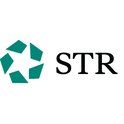What is GOPPAR? How can it benefit your hotels?
What is GOPPAR?
One of the hospitality industry’s key bottom-line metrics, gross operating profit per available room measures the relationship between hotel revenues and expenses. In general, the better you understand GOPPAR, the better you will be at turning revenue into profit. That is why it is important to benchmark your GOPPAR, along with the other key P&L metrics, on a consistent basis.
When looking at the big picture, profitability benchmarking gives your commercial teams visibility over their operating and labor costs relative to revenues, as well as the conversion of revenues to profits given an occupancy or ADR-driven strategy.
Key P&L metrics:
- Gross Operating Profit Per Available Room (GOPPAR)
- Total revenue per available room (TrevPAR)
- Earnings before interest, tax, depreciation, and amortization (EBITDA)
- Labor costs per available room (LPAR)
Gross operating profit (GOP) or GOPPAR work in conjunction with TRevPAR to determine flow through, which calculates the percentage of incremental revenue that results in incremental profit.
GOPPAR formula
Because of its lengthy acronym, the metric might seem complicated. However, calculating GOPPAR is quite simple.
Gross operating profit (GOP) or GOPPAR work in conjunction with TRevPAR to determine flow through, which calculates the percentage of incremental revenue that results in incremental profit.
Gross Operating Profit = total revenue – (total departmental expenses + total undistributed expenses)
Total departmental expenses =
Rooms expense + Food and Beverage expenses + other operated department expenses
Total undistributed expenses =
Administrative & General + Information & Telecommunication Systems + Sales and Marketing + Utilities + Property Operations and Maintenance
How to use GOPPAR?
Analyzing GOPPAR highlights how effectively you are converting revenues across all departments into profit. While you might outperform your competitors or market in the top-line indicators (occupancy, ADR, RevPAR), there could be areas in which you are operating with higher expenses that are pressuring your bottom line.
Off-season periods are a simple example, as GOPPAR can tell you how well you are converting profit at a time with less demand. Perhaps you are attracting more demand and a competitive rate when looking at the market, but at the same time, you are not generating the same level of profits. Chances are your expenses are higher than needed. Maybe you employ too much staff at certain times? Managing labor costs is critical to profitability, and your GOPPAR will indicate if you are managing it well.
A key piece of benchmarking, GOPPAR can be used across entire enterprises. Some high-level examples include:
- Revenue Managers – Use GOPPAR to optimize revenues and expenses, and ultimately, convert revenue to profit.
- General Managers – Analyze income and expense comparisons against competitive sets and market averages.
- Finance Teams – Index GOPPAR to understand income and expense variables against the competition. Monitor operating patterns and maximize profit for each hotel and the portfolio as a whole. Work collectively with development teams to demonstrate returns to prospective franchisees.
Overall, with a better grasp on how your revenue and expense balance compares, you can identify strengths, weaknesses and opportunities to make your hotels or particular departments more profitable.
About STR
STR provides premium data benchmarking, analytics and marketplace insights for the global hospitality industry. Founded in 1985, STR maintains a presence in 15 countries with a North American headquarters in Hendersonville, Tennessee, an international headquarters in London, and an Asia Pacific headquarters in Singapore. STR was acquired in October 2019 by CoStar Group, Inc. (NASDAQ: CSGP), the leading provider of commercial real estate information, analytics and online marketplaces. For more information, please visit str.com and costargroup.com.


